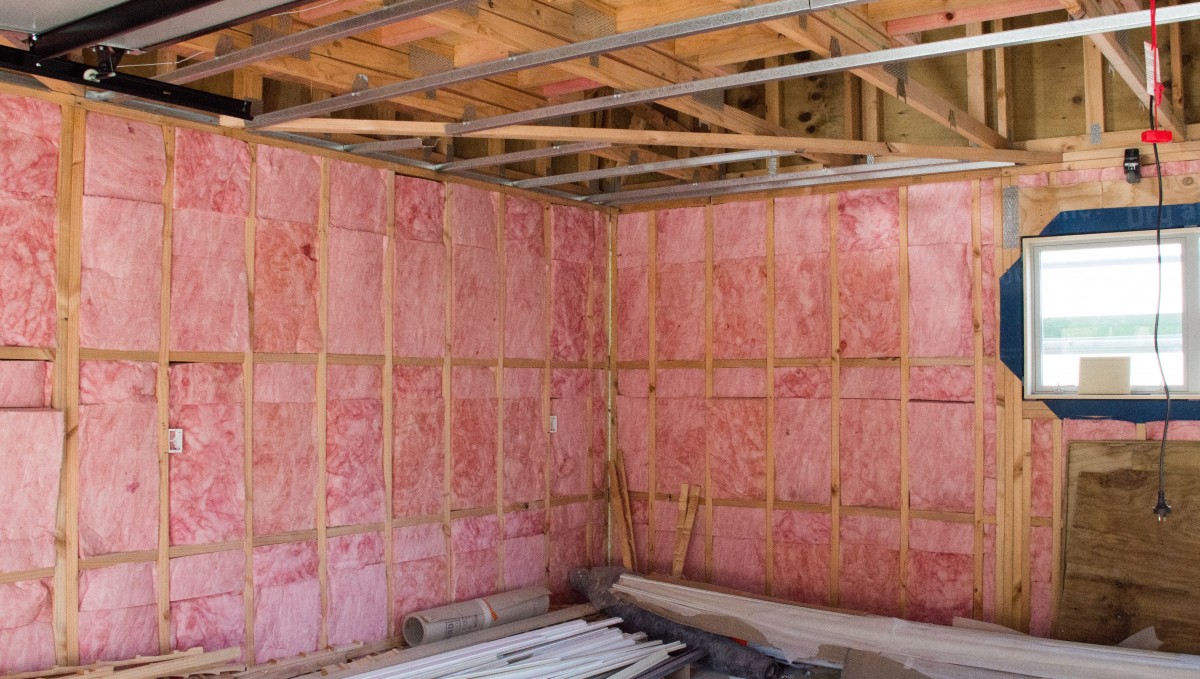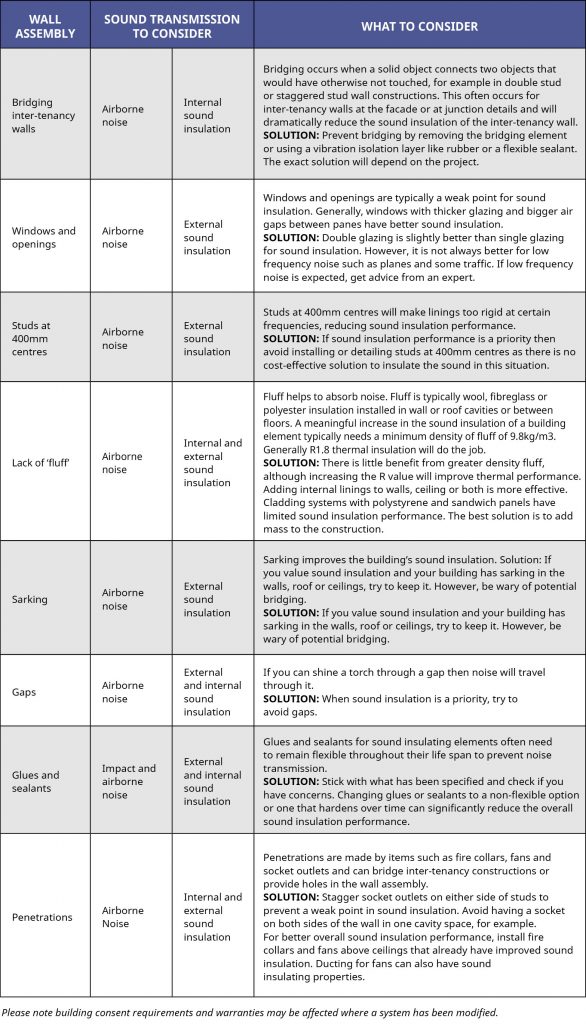Reducing Noise Transmission
23 Jul 2019, LBP & Regulation, Learn, Prove Your Know How

As New Zealand’s population grows, our district plans and long-term planning rules change to ensure we build enough homes for our residents. In many areas of the country, these changes have resulted in a move away from the traditional standalone dwelling to higher density residential construction such as townhouses, terraced housing or apartments.
Sound insulation is a building element’s ability to reduce the sound that goes through it. It is generally given in a single unit number as a guide to its effectiveness at limiting sound transmission for example Sound Transmission Class (STC) 55 and Impact Insulation Class (IIC) 55).
This single unit number is a summary of the element’s sound insulation performance over a range of frequencies. It’s important to note that the single unit doesn’t give you a full picture at all frequencies. For example, an STC 55 timber wall won’t have exactly the same performance at all frequencies as a STC 55 concrete wall.
There are generally two types of sound transmission to consider for buildings:
- Airborne sound – noise originating in air, for example voices, music, motor traffic, wind.
- Impact sound – noise originating directly on a structure by blows or vibration, for example footsteps above, furniture being moved, drilling and hammering the structure.
For wall assemblies, sound insulation should also be thought of in two ways:
- External sound insulation – limiting noise from outside the building. This is generally provided by the building envelope.
- Internal sound insulation – limiting sound transmission from within the building, for example, inter-tenancy sound insulation or plumbing sound insulation.
The minimum requirements for preventing sound transmission through building elements are given in New Zealand Building Code Clause G6 Airborne and impact sound. Remember that if you undertake building work, it must comply with the Building Code regardless of whether it requires a building consent.
You can find Building Code Clause G6 on MBIE’s Building Performance website.
What to consider for wall assembly construction and sound insulation
As a general rule, reducing sound transmission requires more mass or a separation of elements. Mass can be increased by using a thicker version of the same material or by using a denser material.
A range of factors need to be considered when selecting, installing or detailing noise control in wall, floor or ceiling assemblies (see the below table). Always keep to the design specification for building elements that contribute to the sound insulation, particularly around inter-tenancy walls.

This article first appeared in Codewords – Issue 79
Register to earn LBP Points Sign in
2 Comments
Leave a Reply
You must be logged in to post a comment.




Know your building codes
check the appropriate codes for each job